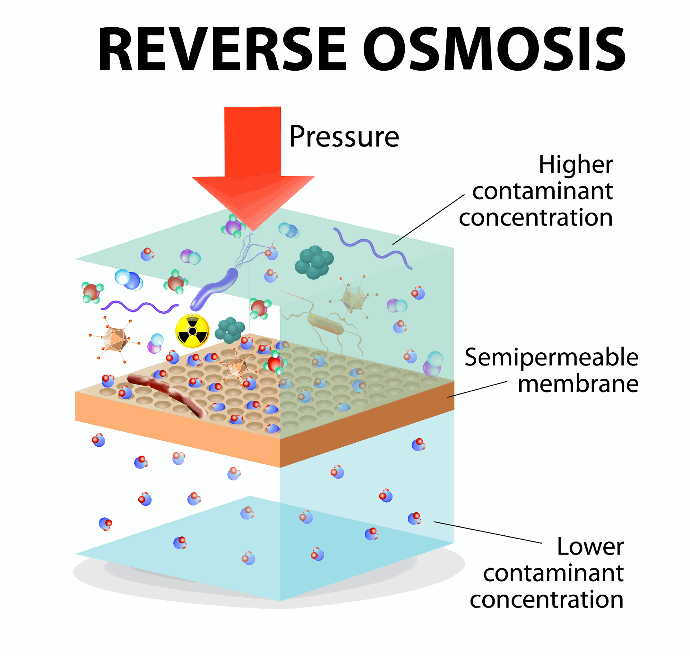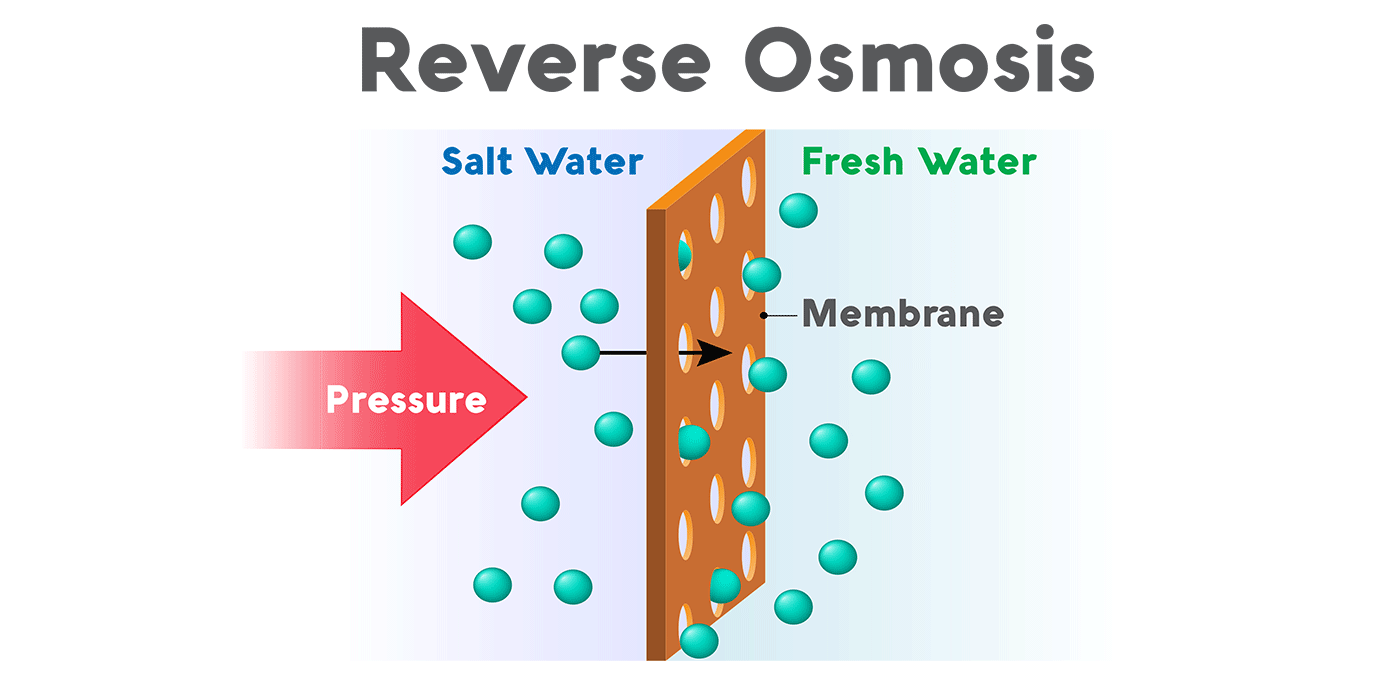Reverse Osmosis Systems use a process that reverses the flow of water in a natural process of osmosis so that water passes from a more concentrated solution to a more dilute solution through a semi-permeable membrane. Pre- and post-filters are often incorporated along with the reverse osmosis membrane itself.
A reverse osmosis filter has a pore size of approximately 0.0001 micron.
Reverse Osmosis Systems have a very high effectiveness in removing protozoa (for example, Cryptosporidium, Giardia);
Reverse Osmosis Systems have a very high effectiveness in removing bacteria (for example, Campylobacter, Salmonella, Shigella, E. coli);
Reverse Osmosis Systems have a very high effectiveness in removing viruses (for example, Enteric, Hepatitis A, Norovirus, Rotavirus);
Reverse Osmosis Systems will remove common chemical contaminants (metal ions, aqueous salts), including sodium, chloride, copper, chromium, and lead; may reduce arsenic, fluoride, radium, sulfate, calcium, magnesium, potassium, nitrate, and phosphorous.
How Does Reverse Osmosis Work?

How Does Reverse Osmosis Work?
To understand what is not removed by reverse osmosis, and the general benefits and limitations of an RO system, it’s important to understand how this kind of filtration system works.
One of the advantages of RO is that they work at the molecular level — meaning they include a filter membrane that’s so small only water molecules can pass through it. This process generally means you end up with some of the cleanest, purest water available. However, this does not always make it a fool-proof water treatment solution.
WHAT DOESN’T REVERSE OSMOSIS REMOVE?
Reverse osmosis filters are often touted as one of the best types of filters on the market. From promising great tasting water to impurity removal, you’d be forgiven for thinking there wasn’t much an RO filter couldn’t do.
And while reverse osmosis filters are a very effective method for filtering many kinds of contaminants and impurities from water, they have situations where they shine, and others where different types of filtration might provide better overall water results.

Does Reverse Osmosis Remove Bacteria?
Reverse Osmosis technology is effective at filtering out most forms of bacteria. As with all filtration systems however, in order for RO to effectively remove bacteria, the filter must be replaced regularly and installed correctly.
Does Reverse Osmosis Remove Fluoride?
Because fluoride molecules are larger than water molecules, reverse osmosis will filter out fluoride effectively. Again, this effectiveness still depends on proper care and maintenance of the RO filter.
Benefits and Limitations of RO Filtration
Reverse Osmosis water treatment is a great first step in residential home water treatment. And, for general municipal water supplies, RO can filter out the most concerning contaminants like lead, arsenic, and other heavy metals, as well as troublesome dissolved hard minerals.
It’s important to note, however, that due to the nature of the treatment (water being forced through multiple membrane layers in a multi-step process) RO treatment can be somewhat time-consuming. For large homes or businesses, this may not be a reliable or dependable solution for the long term. Capacity is one of the important limitations to look at when considering RO filtration for home or office.
In all cases, to get the best possible solution for your water treatment needs, it’s important to start with a water test to determine what’s in your water. For reverse osmosis systems especially, it’s important to understand not only what is your water (iron, calcium, chlorine, etc.) but how much of those contaminants may be present. Once you know what kinds of contaminants are a problem for your specific home, and their average levels in your water supply, you’ll be in a better position to determine the right water filter for you.
Is Reverse Osmosis The Best Way To Purify Water?